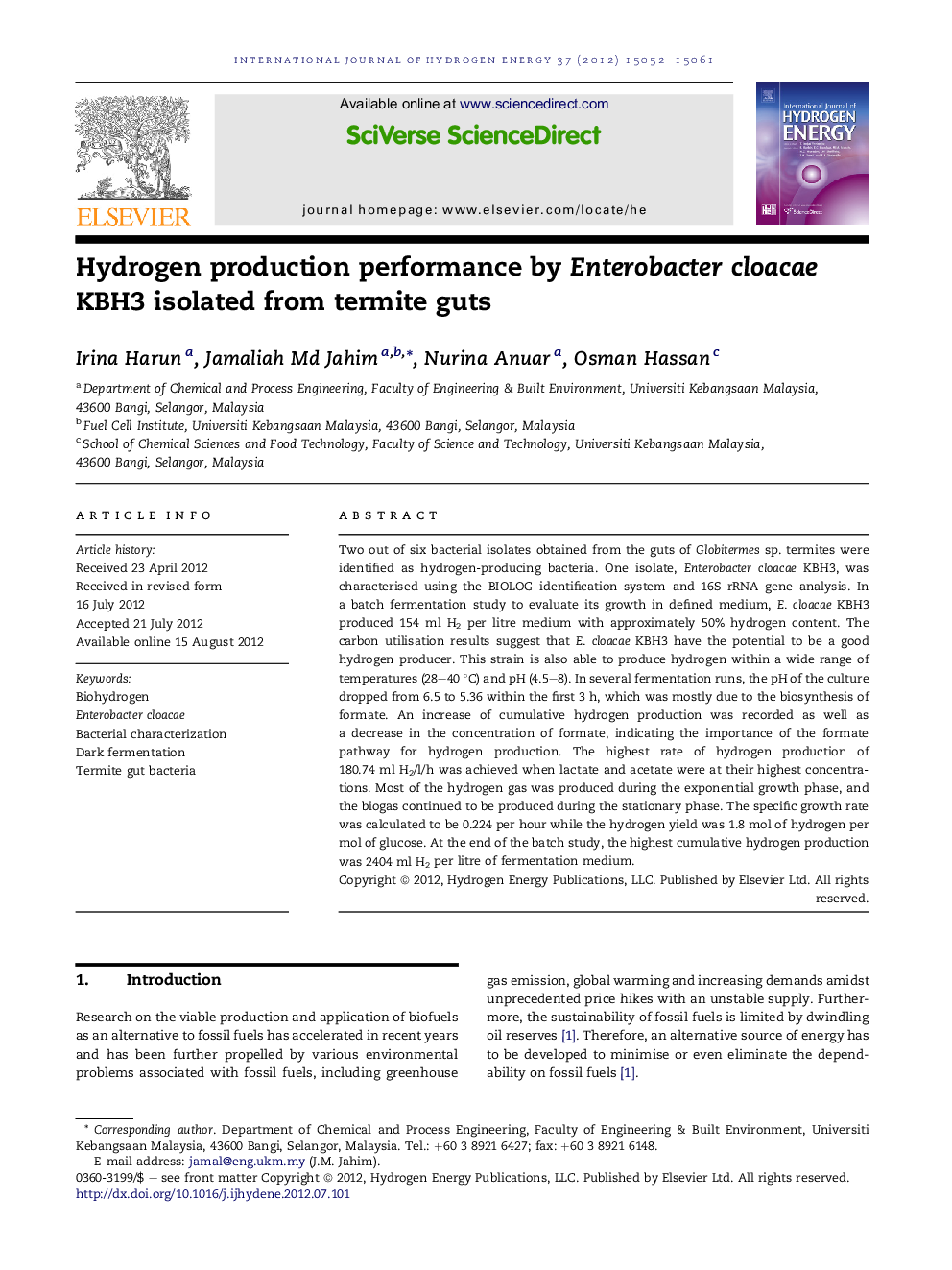| کد مقاله | کد نشریه | سال انتشار | مقاله انگلیسی | نسخه تمام متن |
|---|---|---|---|---|
| 1274513 | 1497549 | 2012 | 10 صفحه PDF | دانلود رایگان |

Two out of six bacterial isolates obtained from the guts of Globitermes sp. termites were identified as hydrogen-producing bacteria. One isolate, Enterobacter cloacae KBH3, was characterised using the BIOLOG identification system and 16S rRNA gene analysis. In a batch fermentation study to evaluate its growth in defined medium, E. cloacae KBH3 produced 154 ml H2 per litre medium with approximately 50% hydrogen content. The carbon utilisation results suggest that E. cloacae KBH3 have the potential to be a good hydrogen producer. This strain is also able to produce hydrogen within a wide range of temperatures (28–40 °C) and pH (4.5–8). In several fermentation runs, the pH of the culture dropped from 6.5 to 5.36 within the first 3 h, which was mostly due to the biosynthesis of formate. An increase of cumulative hydrogen production was recorded as well as a decrease in the concentration of formate, indicating the importance of the formate pathway for hydrogen production. The highest rate of hydrogen production of 180.74 ml H2/l/h was achieved when lactate and acetate were at their highest concentrations. Most of the hydrogen gas was produced during the exponential growth phase, and the biogas continued to be produced during the stationary phase. The specific growth rate was calculated to be 0.224 per hour while the hydrogen yield was 1.8 mol of hydrogen per mol of glucose. At the end of the batch study, the highest cumulative hydrogen production was 2404 ml H2 per litre of fermentation medium.
► Two hydrogen-producing bacteria were isolated from oil palm termite guts.
► Enterobacter cloacae KBH3 was identified using BIOLOG and 16S rRNA analysis.
► Best hydrogen yield was achieved at 30 °C and initial pH of 7.
► Maximum hydrogen production rate was achieved during stationary growth phase.
► Hydrogen evolved primarily through formate decomposition and NADH regeneration.
Journal: International Journal of Hydrogen Energy - Volume 37, Issue 20, October 2012, Pages 15052–15061